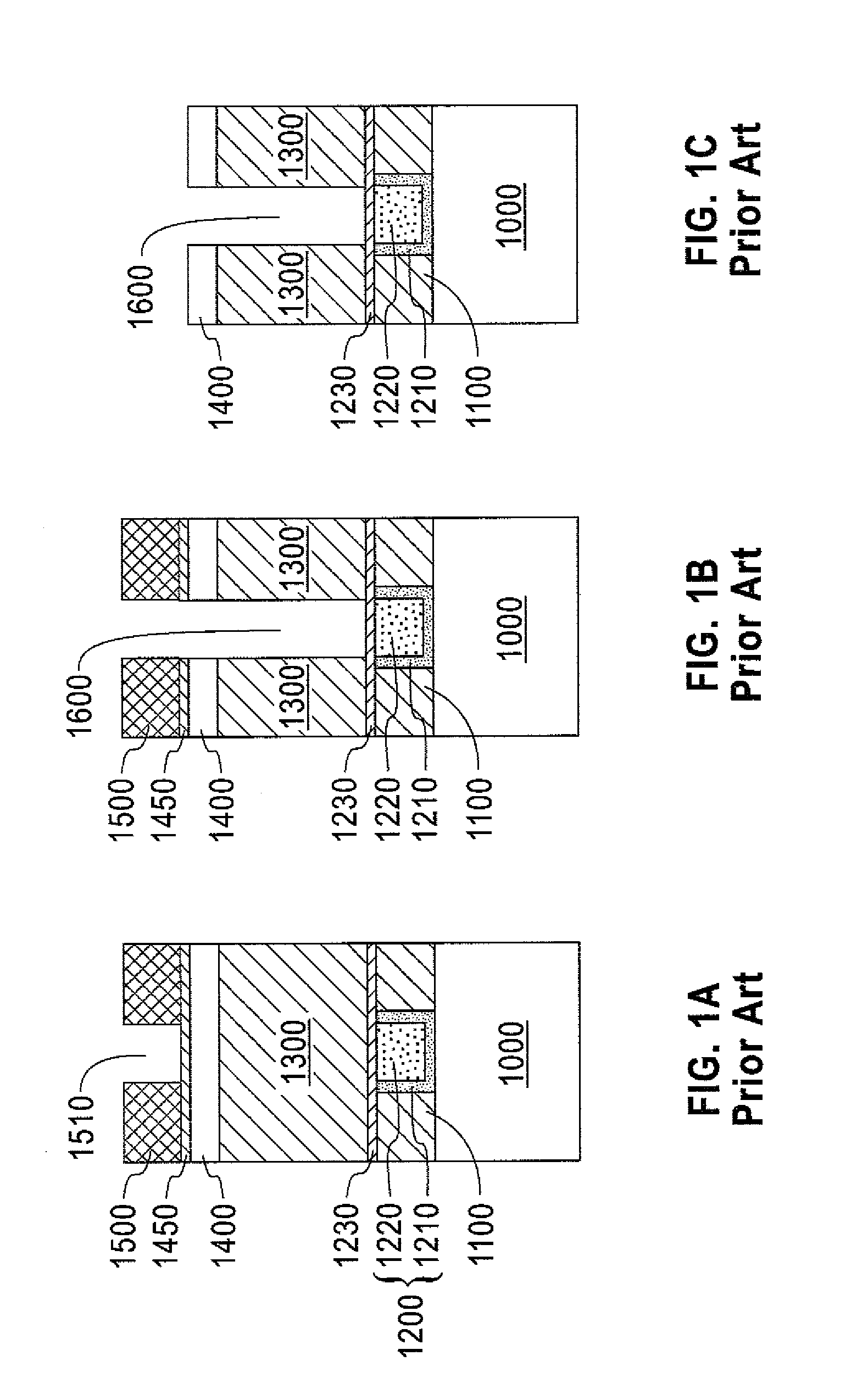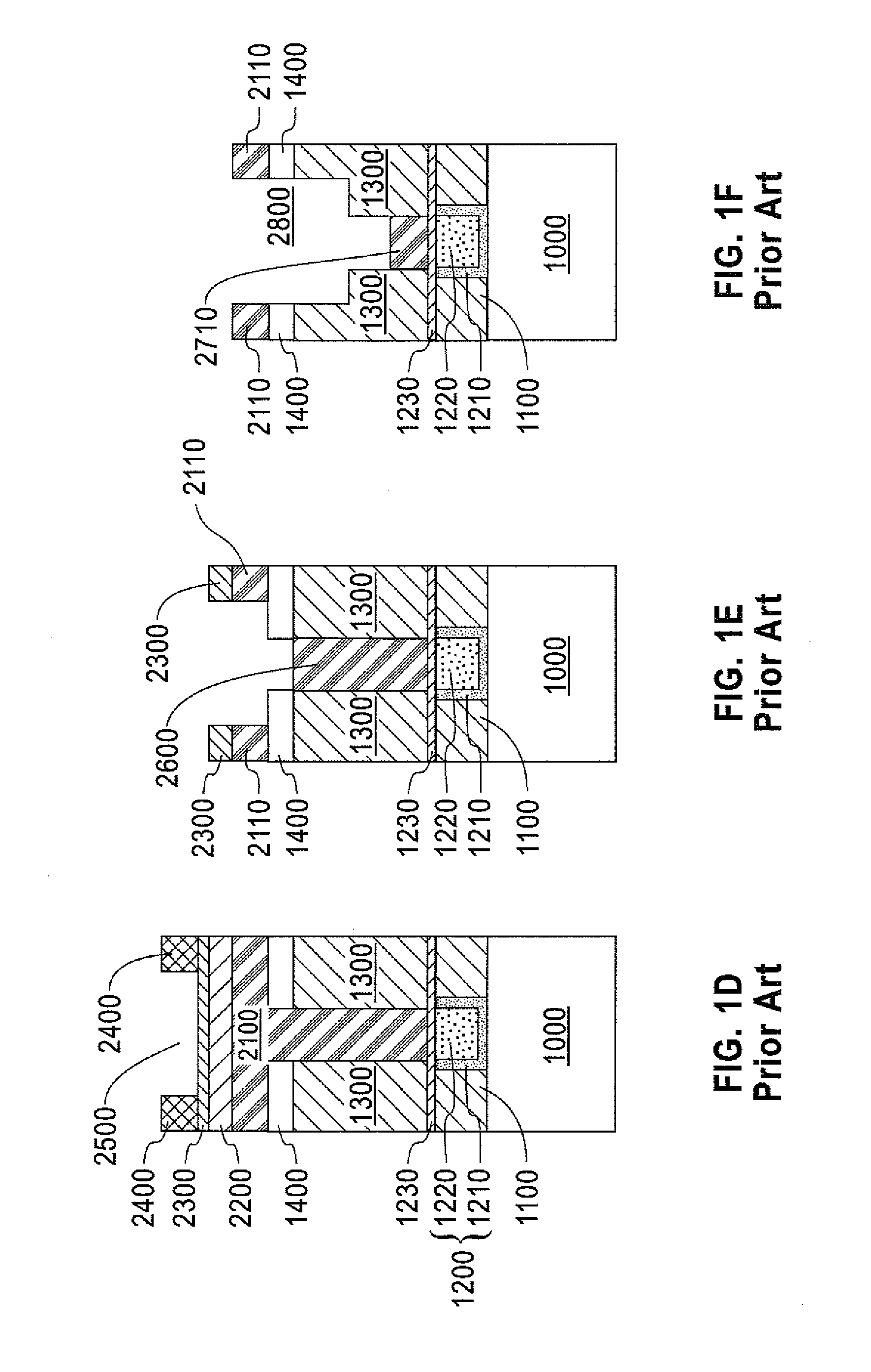Methods to mitigate plasma damage in organosilicate dielectrics
a technology of organosilicate dielectrics and plasma damage, which is applied in the direction of basic electric elements, electrical equipment, semiconductor devices, etc., can solve the problems of increasing the overall speed of operation of the advanced semiconductor chips approaching a limit, and the increase of the width of the line trench, so as to reduce the plasma damage, and eliminate the effect of a plasma damaged region
- Summary
- Abstract
- Description
- Claims
- Application Information
AI Technical Summary
Benefits of technology
Problems solved by technology
Method used
Image
Examples
embodiment 1
Use of a Protective Layer
[0098]In embodiment 1, or the first embodiment, of the present invention, the integration sequence including the dual damascene etch and the plasma strip process described in FIGS. 1A-1I and accompanying paragraphs is interrupted after the patterning of the line trench 2800 in the second intermetal dielectric (IMD) layer 1300 and prior to removal of the patterned disposable material layer 2110 and the disposable via fill plug 2710. In other words, the prior art dual damascene process sequence described in FIGS. 1A-1F and accompanying paragraphs above are employed. For the sake of clarity, the prior art metal interconnect structure of FIG. 1F is reproduced as FIG. 2A with the same reference numerals. Thus, the first exemplary metal interconnect structure according to the first embodiment of the present invention shown in FIG. 2A is substantially the same as the prior art structure of FIG. 1F, and may be derived by the same processing steps known in the art.
[0...
embodiment 2
Use of a Sacrificial Layer
[0130]In embodiment 2, or the second embodiment, of the present invention, the integration sequence including the dual damascene etch and the plasma strip process described in FIGS. 1A-1I and accompanying paragraphs is interrupted after the patterning of the line trench 2800 in the second intermetal dielectric (IMD) layer 1300 and prior to removal of the patterned disposable material layer 2110 and the disposable via fill plug 2710 as in the first embodiment. For the sake of clarity, the prior art metal interconnect structure of FIG. 1F is reproduced as FIG. 3A with the same reference numerals. Thus, the second exemplary metal interconnect structure according to the second embodiment of the present invention shown in FIG. 3A is substantially the same as the prior art structure of FIG. 1F, and may be derived by the same processing steps known in the art.
[0131]Optionally, a short and mild plasma strip process or a mild wet clean that does not substantially al...
example 1
ILLUSTRATIVE EXAMPLE 1
Embodiment 1
[0141]A batch of 300 mm diameter silicon wafers was precleaned and coated with a 50 nm thick Si(CN) dielectric barrier film using a plasma enhanced CVD process known in the art. Next, a layer of a precursor film containing an organosilicate backbone and a pore forming labile organic agent (termed porogen) was deposited employing a process disclosed in one of U.S. Pat. Nos. 6,312,793; 6,437,443; and 6,479,110 to Grill et al., which are incorporated herein by reference.
[0142]The deposited film was then subjected to ultraviolet irradiation at 400° C. for a time period between 5 to 15 minutes to remove the labile porogen from the film and to enable good network crosslinking leading to an organosilicate film with a controlled volume fraction of pores with median diameter nominally less than 2 nm to form an ultra low k intermetal dielectric film. The k value of the ultra low k intermetal dielectric films is tunable and k values between 2.2 and 2.4 were ac...
PUM
 Login to View More
Login to View More Abstract
Description
Claims
Application Information
 Login to View More
Login to View More - R&D
- Intellectual Property
- Life Sciences
- Materials
- Tech Scout
- Unparalleled Data Quality
- Higher Quality Content
- 60% Fewer Hallucinations
Browse by: Latest US Patents, China's latest patents, Technical Efficacy Thesaurus, Application Domain, Technology Topic, Popular Technical Reports.
© 2025 PatSnap. All rights reserved.Legal|Privacy policy|Modern Slavery Act Transparency Statement|Sitemap|About US| Contact US: help@patsnap.com



